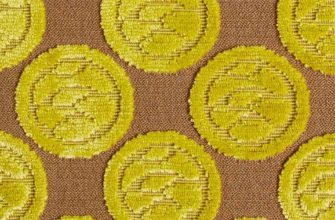Tulle not only serves as an aesthetic decoration of the interior, but also protects spaces from sunlight, dust and curious glances. A wide range of curtains allows you to choose a suitable option that will become a stylish accent in the decor of a room for a girl or a boy.
How to choose fabric
For decorating a child's room, it is better to use curtains made of natural materials. Cotton fabrics are one of the best options:
- These materials are made from environmentally friendly fibers;
- They look great on windows;
- It is easy to create tulle from cotton with your own hands.
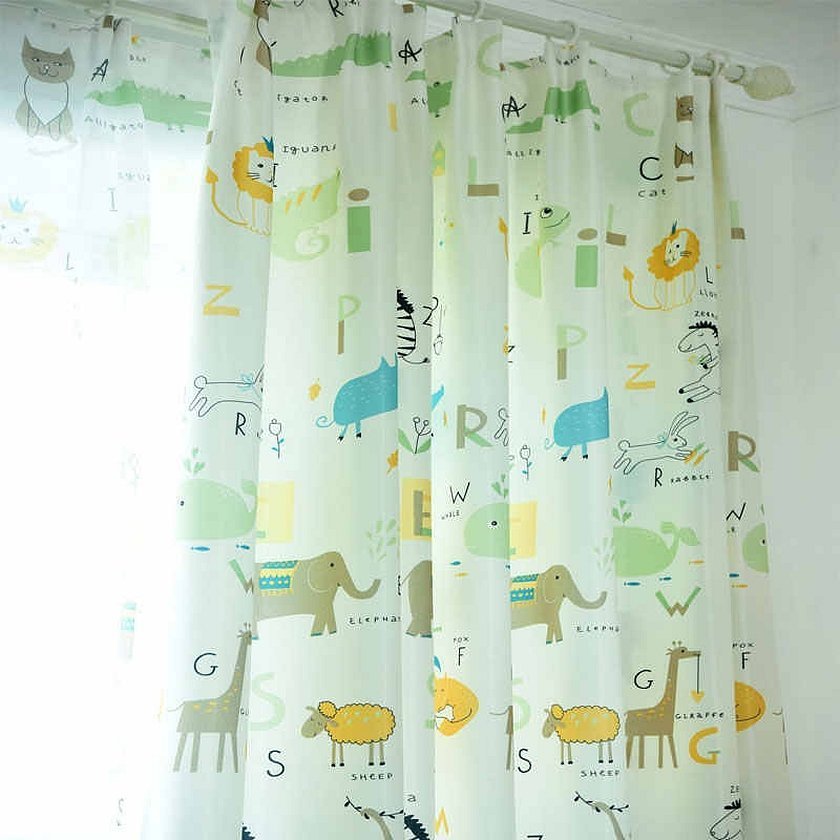
Example of interior with cotton
The disadvantage of cotton curtains is that they fade when exposed to sunlight.
From a practical perspective, you can choose polyester tulle. Its advantages include:
- The material does not wrinkle;
- Does not shrink after washing;
- Polyester does not fade in the sun;
- Dries quickly.
The disadvantages include:
- The material is synthetic;
- Polyester curtains can look unnatural;
- A lot of dust accumulates on them;
- The material may become electrified.
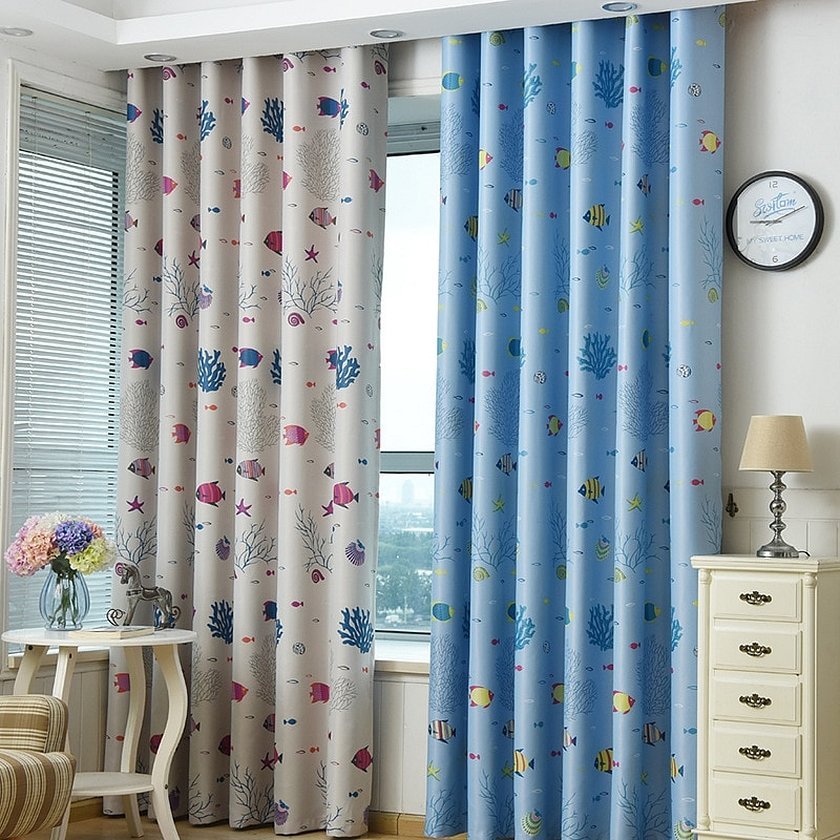
The following materials are also great for curtains:
- Linen - thin and easy to process;
- Organza - often used to create tulle. Contains chemical fibers that are completely safe;
- Chintz is an inexpensive cotton material that is easy to care for and retains its shape well.
One of the most popular materials for tulle in a child's room is a mixture of cotton and synthetic fibers. Such curtains look great on windows and are highly wear-resistant.
Fabric density
When choosing the density of the fabric, you should consider the level of illumination in the room. If the windows face the sunny side, preference should be given to curtains, as they have a higher density compared to tulle. In the case where the room is poorly lit by natural light, it is better to choose light and transparent curtains. It is recommended to update the curtains depending on the season: in the summer, use denser and brighter fabrics, and in the winter - light and translucent. Light curtains are suitable for small and dark rooms.
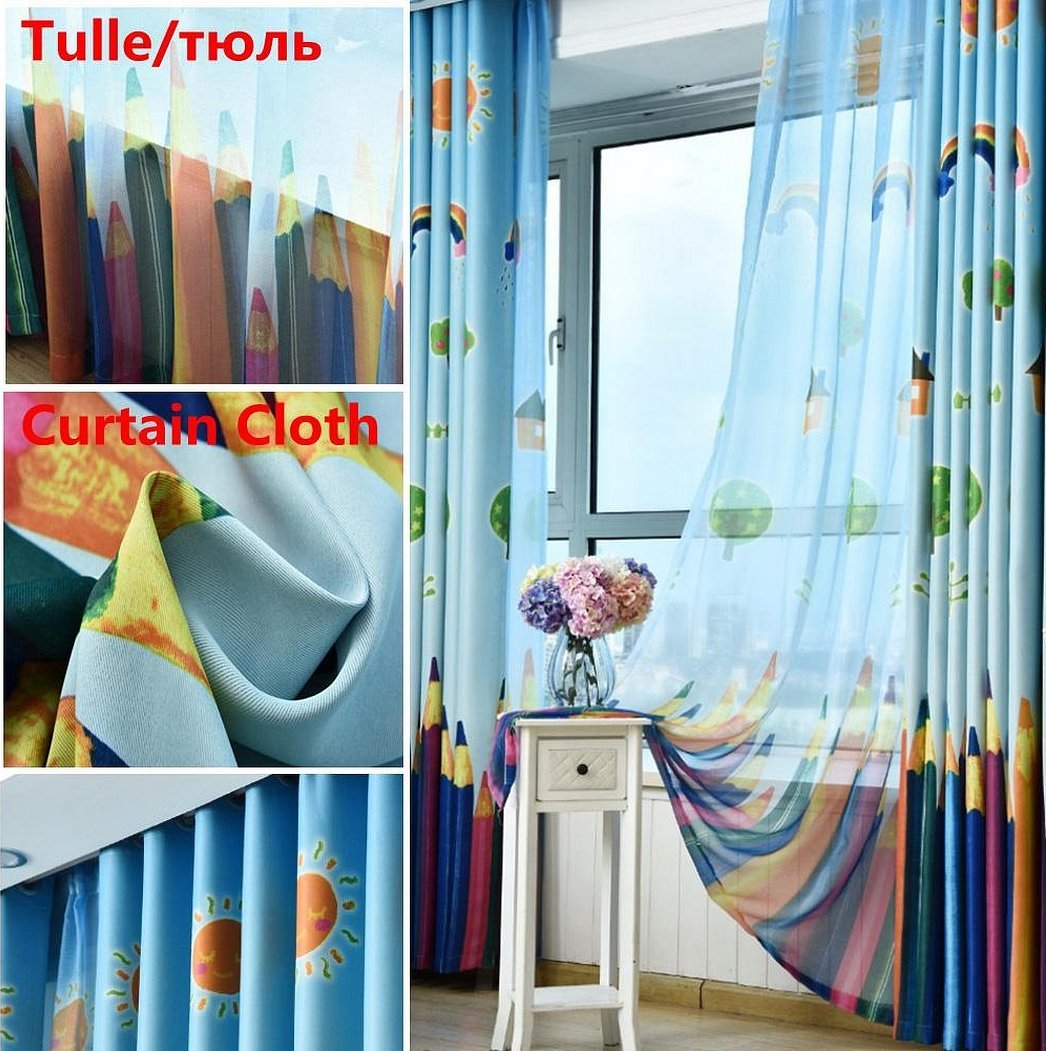
Curtain dimensions: height and width
To choose the right size of curtains, you need to measure the area where they will be placed. It is best to use a tape measure, as it retains the shape well and does not distort the data. You should measure:
- The length of the "working" cornice;
- Distance from the cornice to the window sill;
- Height from the cornice to the floor.
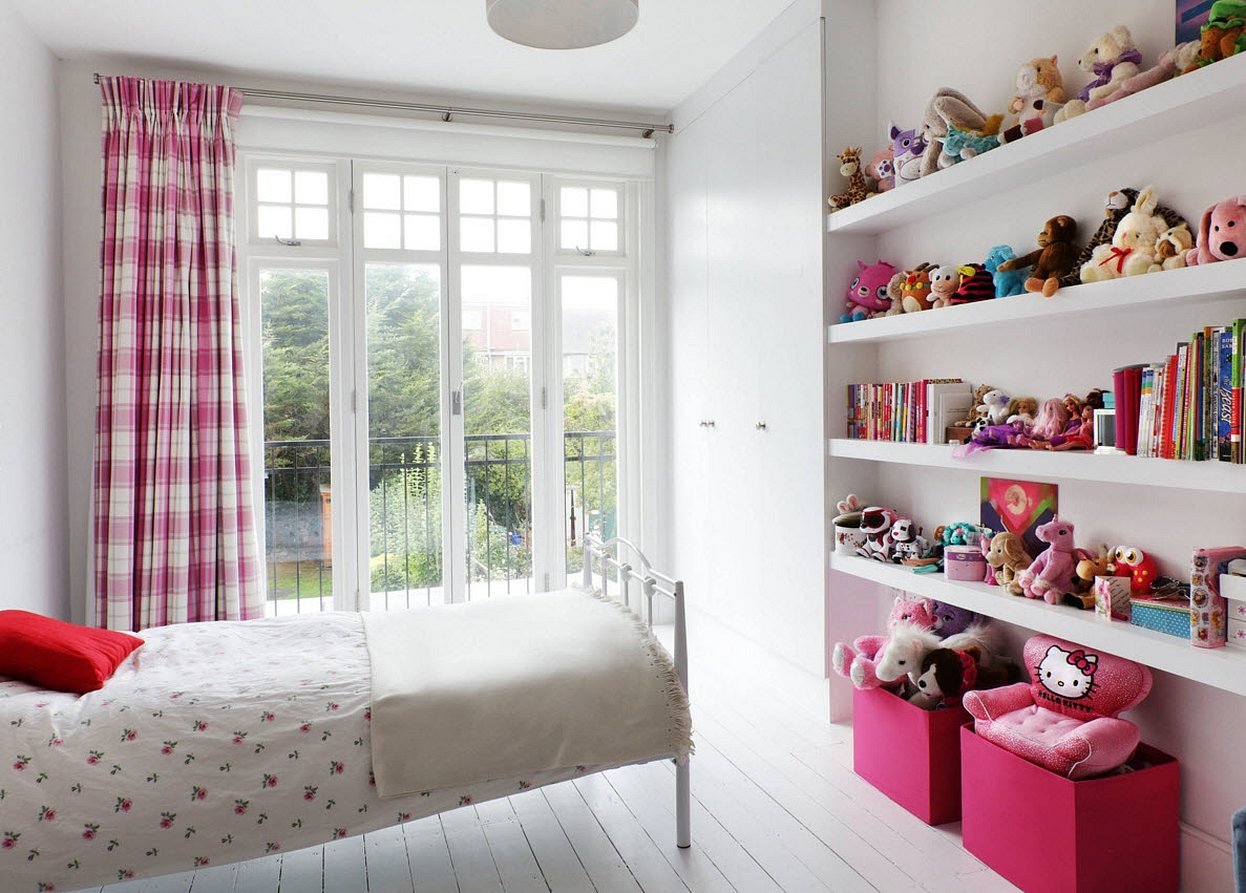
Important! For a child's room, curtains that reach the floor without unnecessary gathers are ideal.
The width of the curtains is measured by the width of the window, but you also need to consider how many gathers you plan. Here are some recommendations on how to correctly calculate the number of gathers so that the curtains look harmonious and do not overload the room:
- Consider the volume of the room when choosing drapery;
- In a small room, voluminous curtains may seem too intrusive;
- Pay attention to the interior of the room.

Please note! For a child's room, tulle without excessive folds is best suited.
Take measurements and record them to the nearest centimeter.
How to choose a color
It should be taken into account that tulle is part of the curtains. Here are some recommendations to consider when choosing curtains:
- For thick curtains or bright drapes, it is better to choose a plain tulle;
- The color of the tulle and curtains should match, creating a harmonious look in the interior of the room.
- If the tulle has bright patterns or is made in a lace style, plain curtains of medium density will do. It is also important that the pattern on the curtains matches the style of the furniture, walls or carpet.
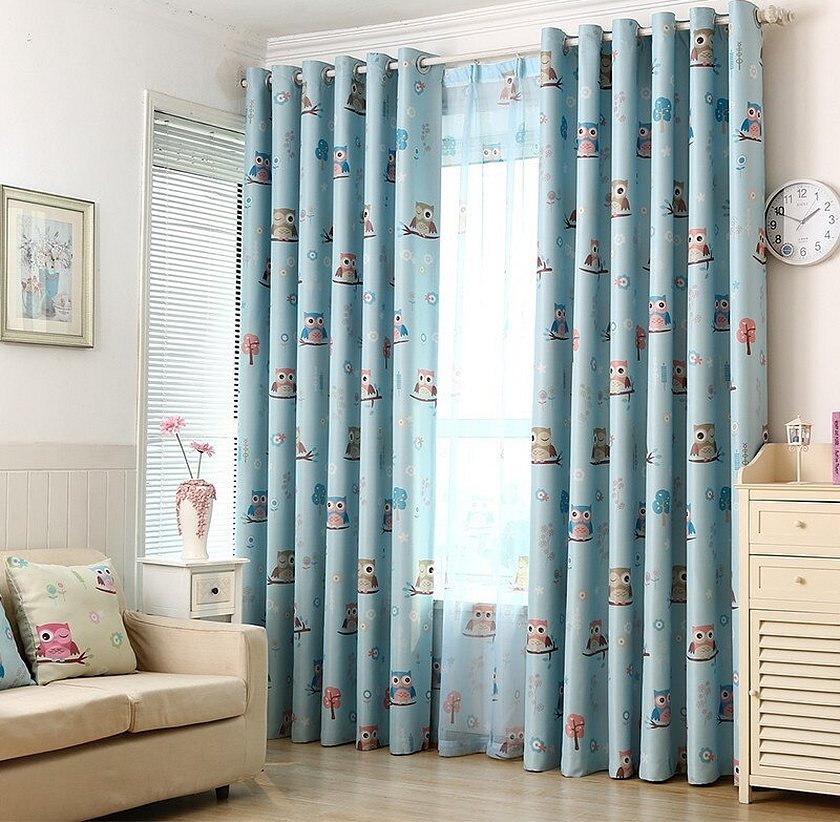
In a girl's room, curtains can be white, cream or soft pink, as well as in a combination of two shades with images of butterflies, fairies, dolls, flowers, hearts and birds.
Boys are interested in cars from an early age, so curtains with cars are an ideal option for them. You can also choose drawings with marine motifs, airplanes, dinosaurs or characters from favorite cartoons. Often, curtains with cars from the cartoon "Cars" are chosen for a boy's room. Curtains with geometric shapes are suitable for a teenager: diamonds, checks or stripes.
Methods of fastening Tulle
For a child's room, curtain fastenings should not only be convenient, but also strong enough, since children often play with them. Eyelets meet these requirements. These are metal or plastic rings that are installed at the top of the tulle.
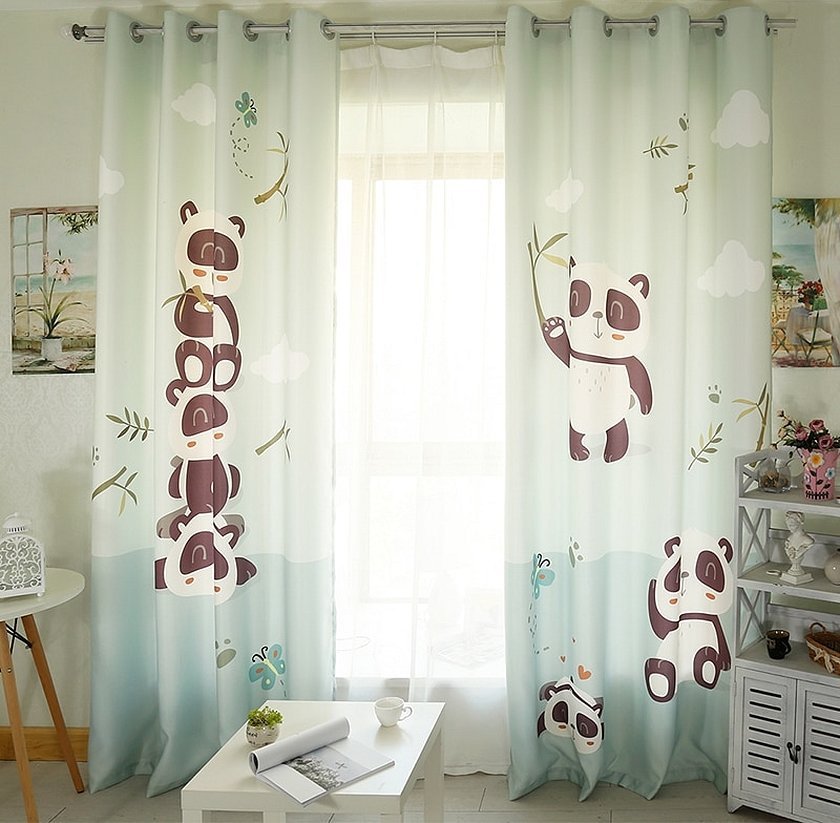
Grommets are now a popular accessory for curtains and are a durable and functional way of fastening. They help the gathers on the curtains look neat and even. To attach the curtain to the curtain rod, you do not need ties or hooks - just take the eyelets and string them on the rod. They move easily along it and are securely held. Even with strong tension on the fabric, the curtains will stay in place.

Drapery methods
There are many ways to drape, but in a child's room, those that can be done by yourself are especially suitable, for example:
- We move one part of the curtain to the side, and leave the other part falling from the cornice in vertical folds;
- We cross the curtains and fix them in the middle side part using grabs, magnets or tape;
- On one side we pick up the curtain and fix it with a magnet or tape.
Important! In a child's room, you should not use complex draperies; it is better to create simple folds, as children like to hide behind curtains, which can spoil the overall composition.
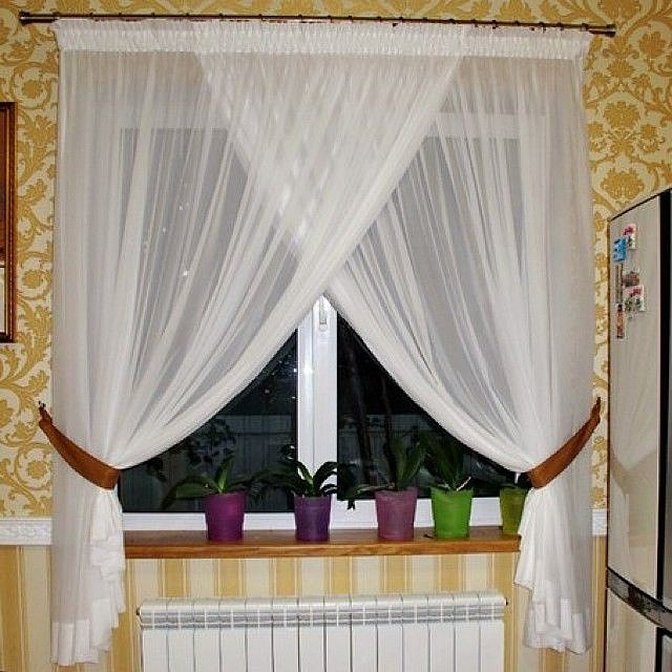
Caring for tulle
Tulle is lightweight and delicate, so it should be hand washed, although some types can be machine washed.
Please note! When hand washing, it is necessary to rinse off the washing powder thoroughly to avoid a chemical reaction with the sun's rays, which can lead to fading of the fabric. It is advisable to pre-soak white curtains in bleach before washing.
You can remove dust from the tulle using a vacuum cleaner with a brush. Frequent airing of the room will help the tulle stay fresh. To make care easier, you can use the services of a dry cleaner, which will offer the necessary service.
When choosing curtains for a child's room, it is important to consider the child's preferences, as well as how they will fit into the interior. Such a decorative element can harmoniously complement the room, making it more comfortable and attractive.
https://www.youtube.com/watch?v=r-YRR4dVgw0



